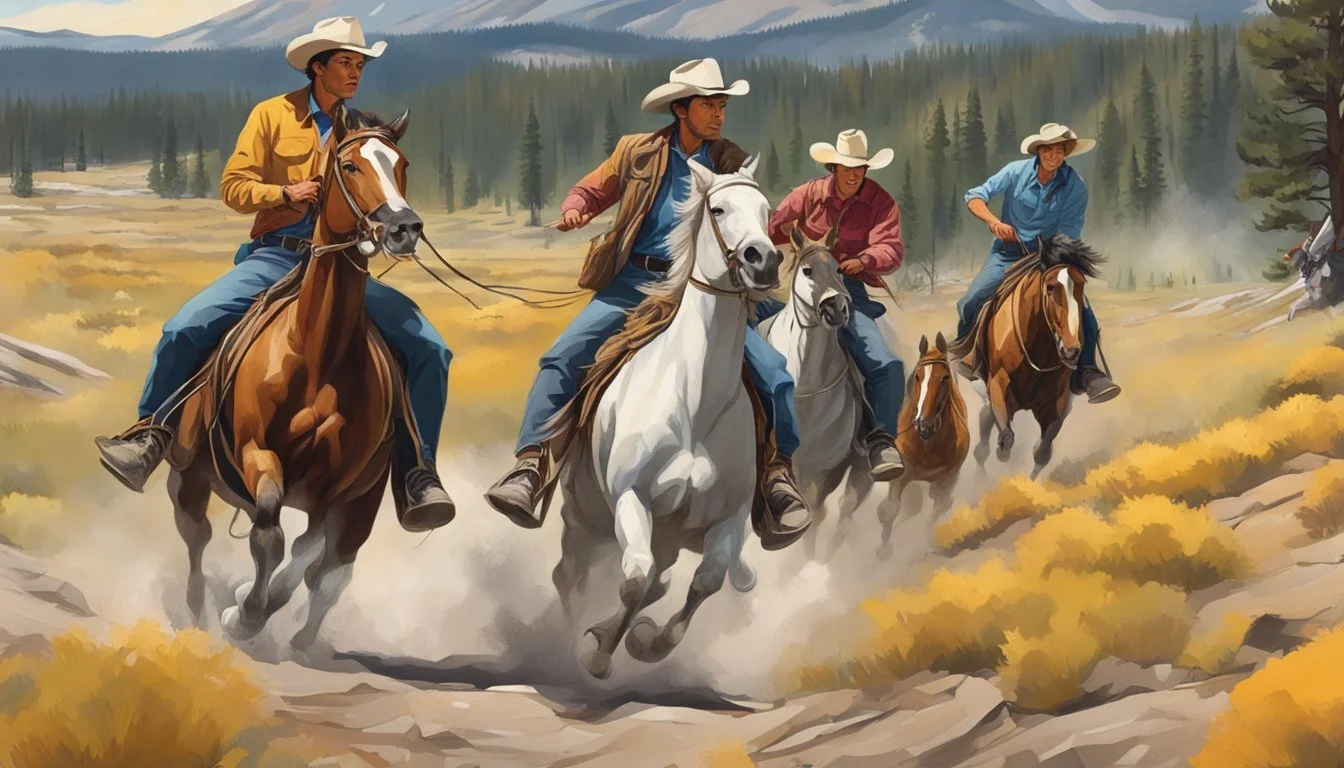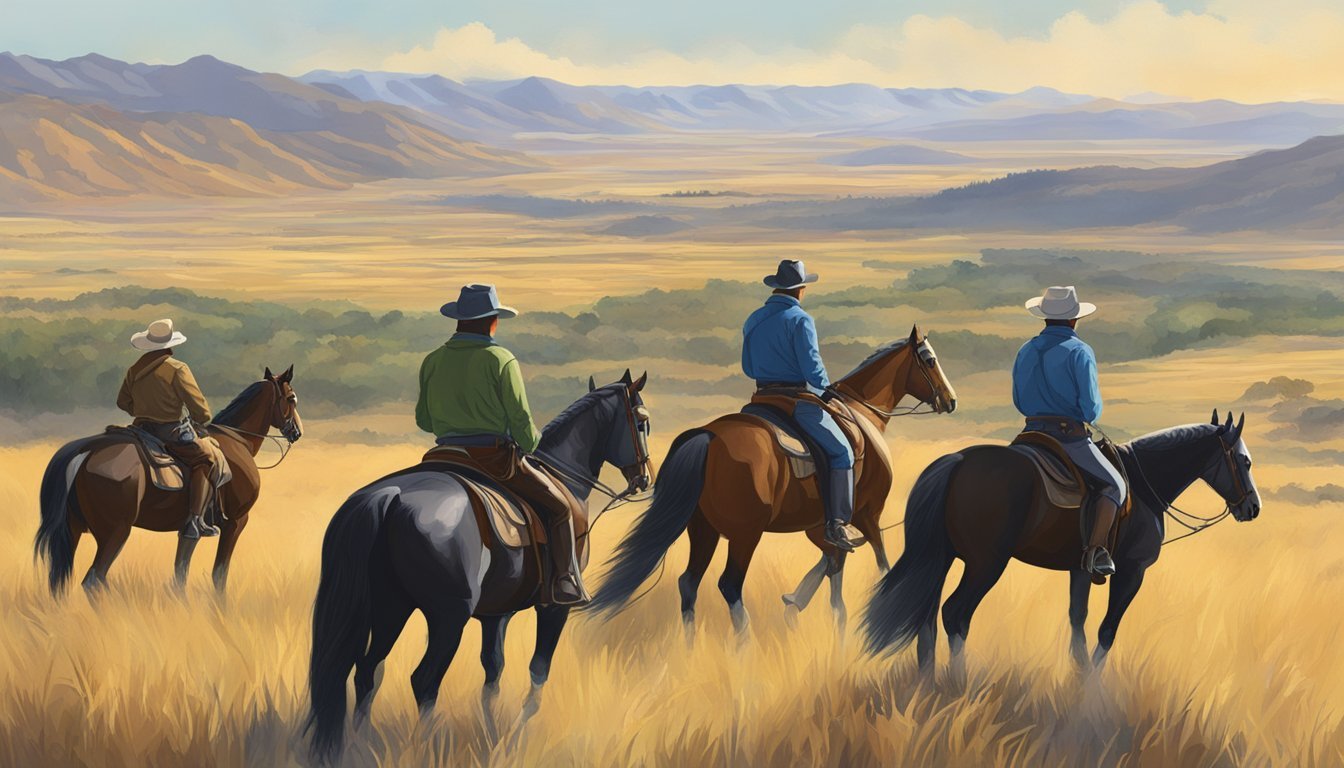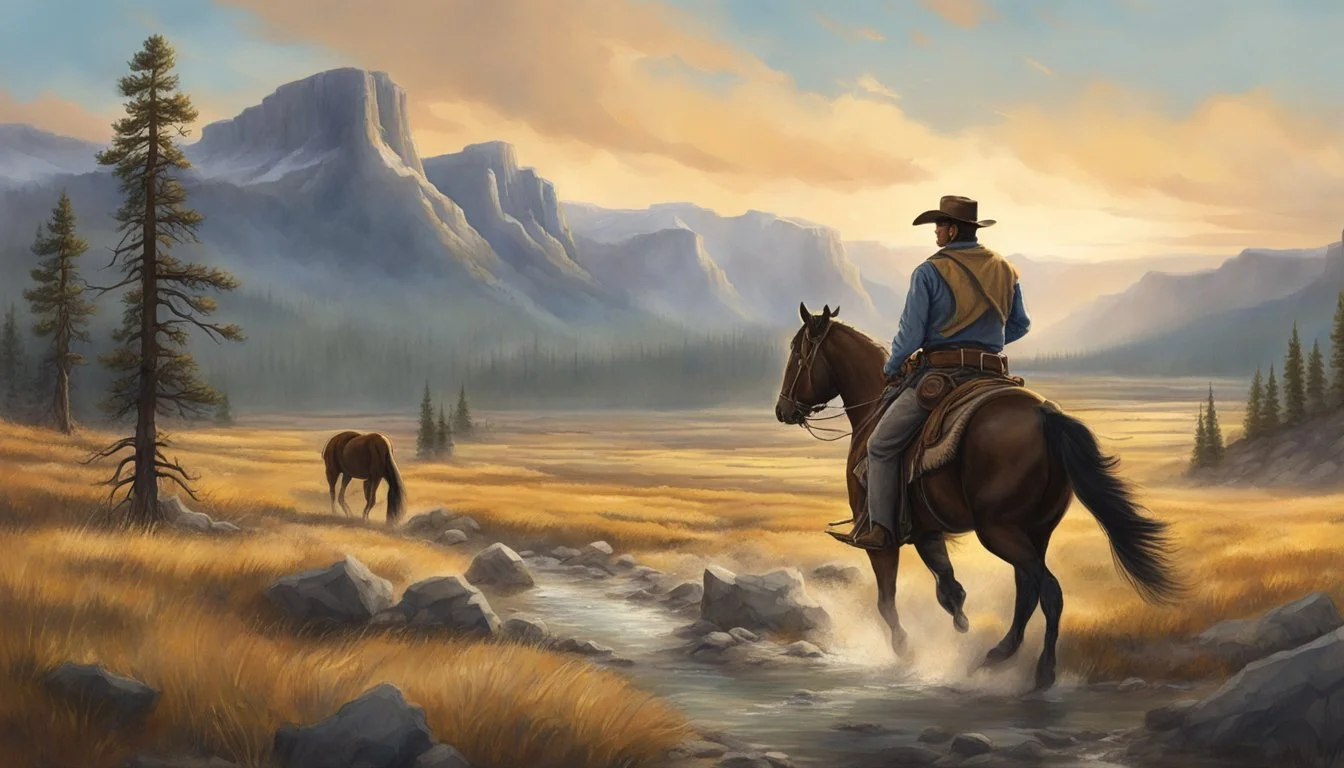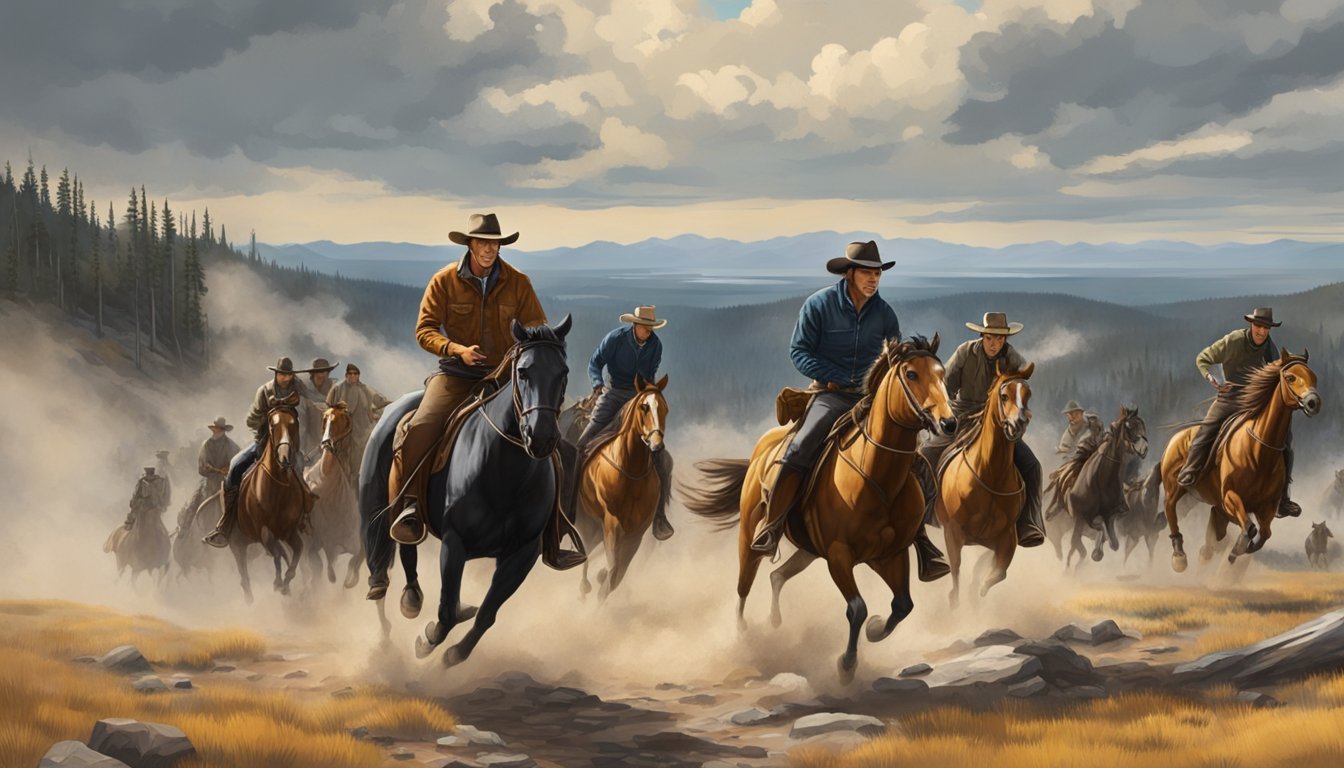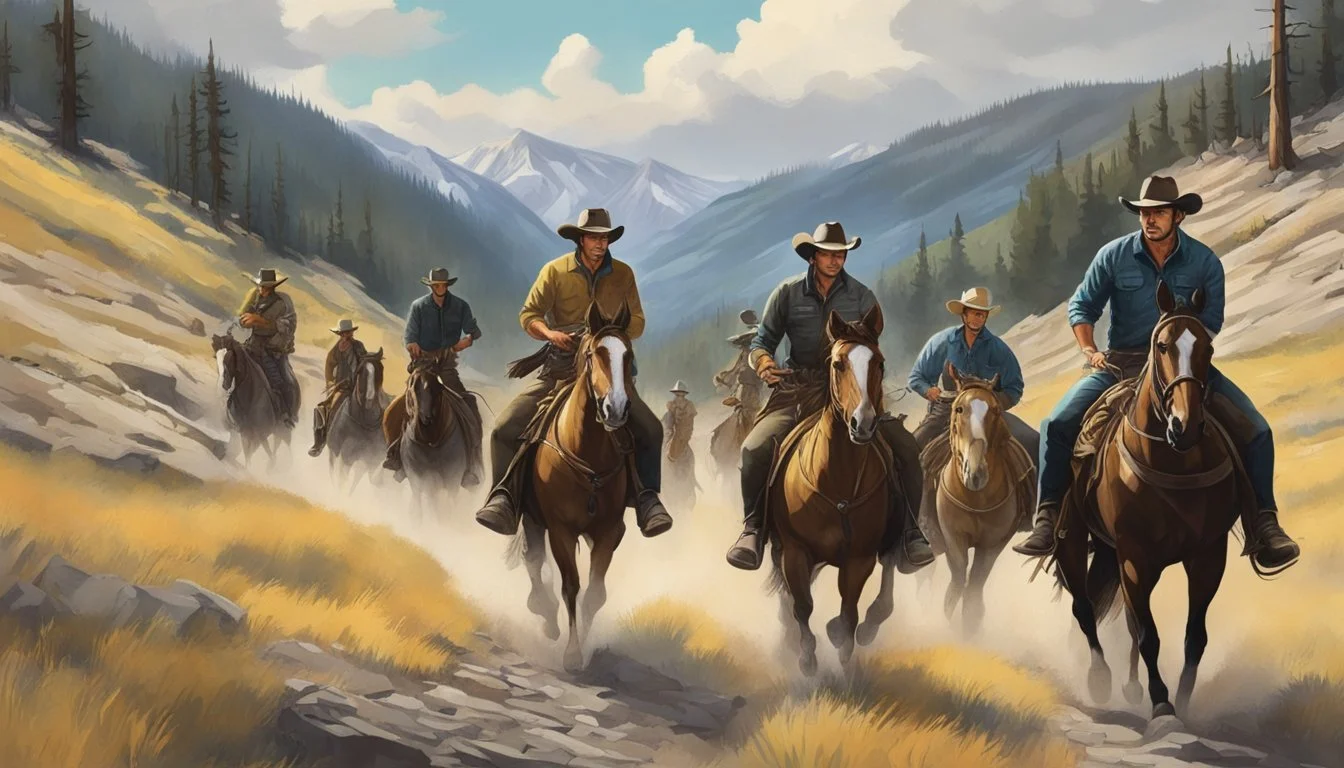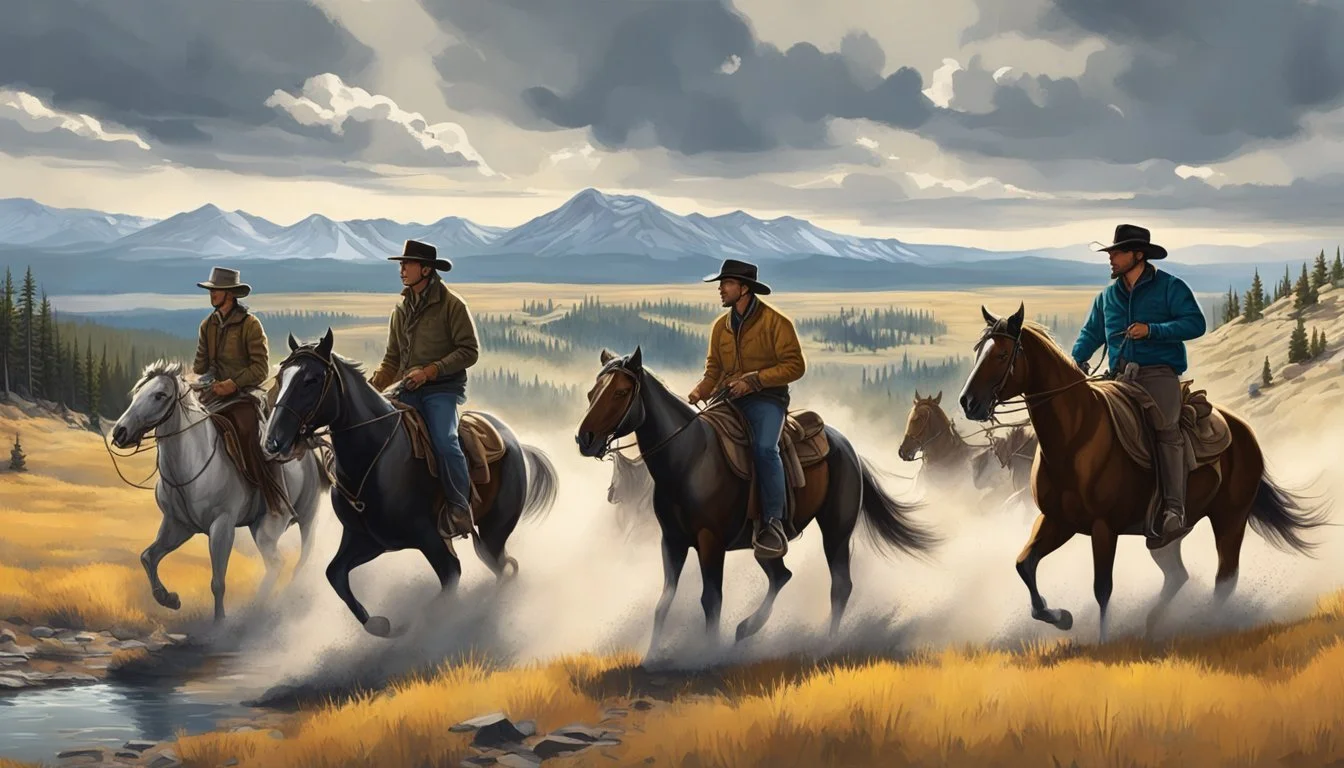Young Ranchers Fleeing Rural Life Exposed in Yellowstone's Shocking Reality Check
Yellowstone, the popular TV series set in rural Montana, shines a spotlight on the pressing issue of rural brain drain. The show depicts the struggle of the Dutton family to maintain their vast ranch while grappling with modern pressures and evolving societal norms. Rural brain drain poses a significant challenge for small towns in the American West, as young, educated individuals often leave for urban areas in search of better opportunities.
The series explores the tension between traditional ranching culture and contemporary values, highlighting the difficulties faced by rural communities in retaining their youth. Through its storytelling, Yellowstone encourages viewers to consider multiple perspectives on rural challenges, including the economic and social impact of losing the next generation.
Yellowstone's portrayal of ranch life offers insights into potential solutions for keeping young people engaged in rural economies. The show depicts the importance of mentorship, as experienced ranch hands guide and train the younger generation in essential skills. This approach not only preserves traditional knowledge but also creates a sense of community and purpose that may encourage youth to stay and contribute to their rural hometowns.
Historical Context of Land Ownership
Land ownership in the American West has a complex history shaped by settlers, Native American tribes, and government policies. This legacy continues to influence modern conflicts depicted in shows like Yellowstone.
From Early Settlers to Modern Times
The 1862 Homestead Act allowed settlers to claim 160 acres of public land for free. This policy dramatically reshaped the American West. Ranchers and farmers established vast properties, often at the expense of Native American tribes.
The cattle industry boomed in the late 1800s. Large ranches formed, with wealthy owners amassing significant land holdings. This era saw frequent conflicts over grazing rights and water access.
By the early 1900s, conservation efforts gained traction. The creation of national parks like Yellowstone in 1872 marked a shift towards preserving natural landscapes. This sometimes clashed with ranchers' interests.
Yellowstone and the Dutton Family Legacy
In Yellowstone, the fictional Dutton family's ranch represents a centuries-old legacy. The show suggests their ancestors arrived in Montana in 1883, during the height of Western expansion.
The Duttons' struggles mirror real historical tensions. Their conflicts with Native American tribes reflect the painful history of land dispossession. The family's efforts to maintain their property against modern threats echo genuine concerns of long-established ranching families.
Yellowstone's portrayal of the Dutton legacy highlights the enduring impact of early land policies. It showcases how historical injustices and changing land use priorities continue to shape the modern American West.
Ranching Culture in Yellowstone
Ranching culture forms the backbone of "Yellowstone," reflecting the real-world challenges and traditions of rural America. The series offers a raw portrayal of life on a vast Montana ranch, showcasing the deep connection between land, family, and legacy.
The Importance of the Land
The Yellowstone Dutton Ranch, owned by John Dutton (played by Kevin Costner), is more than just property—it's the family's lifeblood. The land represents generations of hard work, sacrifice, and tradition. For the Duttons, preserving their ranch is paramount, often leading to conflicts with developers, Native American tribes, and government entities.
John Dutton's fierce protection of his land mirrors the real-life struggles of many ranchers in Montana and across the American West. The show highlights how land ownership is intrinsically tied to power, identity, and the survival of a way of life.
Preserving Ranching Traditions
"Yellowstone" vividly portrays the daily routines and skills essential to running a large cattle operation. Viewers witness branding, cattle drives, and horse training—activities that have remained largely unchanged for over a century.
The series emphasizes the importance of passing down these traditions to younger generations. John Dutton and his ranch hands serve as mentors, teaching both practical skills and the values associated with the ranching lifestyle.
This preservation of tradition is not just about maintaining a business; it's about honoring a cultural heritage deeply rooted in the American West.
Challenges Facing Rural America
"Yellowstone" doesn't shy away from depicting the harsh realities confronting modern ranchers. Economic pressures threaten the viability of traditional ranching, forcing difficult decisions about land use and business practices.
The show explores issues like rural brain drain, with younger generations leaving for urban opportunities. This exodus challenges the sustainability of ranching communities and their way of life.
Land disputes feature prominently, reflecting real tensions between ranchers, developers, and government agencies. These conflicts underscore the complexities of land management and conservation in the modern West.
Socioeconomic Issues and Rural Gentrification
Yellowstone explores the complex socioeconomic landscape of rural America, highlighting tensions between preservation and progress. The show portrays the challenges of maintaining traditional ways of life in the face of encroaching development and shifting demographics.
Impact of Economic Development
Economic development in rural areas brings both opportunities and threats. New businesses and industries can create jobs and stimulate local economies. However, they often alter the character of small towns and disrupt established ways of life.
In Yellowstone, this tension is exemplified by conflicts between ranchers and real estate developers. The Dutton family fights to preserve their ancestral lands from those seeking to transform them into luxury resorts or subdivisions.
The show also touches on the role of government intervention in rural development. Characters debate the merits of tax incentives, zoning changes, and infrastructure projects that could reshape their communities.
Wealth Disparity and Rural Exodus
Yellowstone depicts stark wealth disparities in rural settings. The Dutton family's vast ranch contrasts sharply with the economic struggles of other local residents and nearby Native American communities.
This inequality drives a rural exodus, as young people leave in search of better opportunities. The show explores the challenges of keeping the next generation engaged in ranching and other traditional occupations.
Corporate influence exacerbates these issues. Large companies buy up land and resources, often at the expense of long-time residents. This shift in power dynamics fuels resentment and conflict within the community.
The series also examines how family dynamics intersect with economic pressures. Characters grapple with inheritance issues, business decisions, and conflicting visions for their family's future in a changing rural landscape.
Environmental and Societal Challenges
Rural communities near Yellowstone face complex issues balancing tradition, conservation, and development. Climate shifts and land use conflicts create hurdles for ranchers trying to sustain their way of life.
Land Rights and Conservation
Ranchers in Yellowstone's vicinity grapple with competing interests over land use. Conservation efforts aim to protect wildlife habitats and ecosystems. This often conflicts with traditional ranching practices and property rights.
Federal regulations limit grazing on public lands. Some ranchers view these rules as threats to their livelihoods. Others embrace sustainable practices to coexist with wildlife.
Land trusts offer options to preserve open spaces. These agreements can provide financial incentives for ranchers. They also help maintain critical wildlife corridors.
Urban sprawl adds pressure to sell ranch lands. Rising property values tempt some to subdivide for development. This fragmentation impacts both ranching communities and ecosystems.
Climate Change and Its Effects on Ranch Life
Shifting weather patterns pose significant challenges for Yellowstone area ranchers. Prolonged droughts stress water resources and reduce grazing capacity. Extreme weather events like floods and wildfires threaten livestock and infrastructure.
Changing temperatures alter growing seasons and crop yields. This impacts feed production and grazing rotations. Ranchers must adapt their practices to maintain productivity.
New pests and diseases emerge as the climate warms. These threats can affect both crops and livestock health. Ranchers need to stay vigilant and adjust their management strategies.
Snowpack reductions affect water availability in summer months. This creates challenges for irrigation and stock watering. Some ranchers invest in water storage and efficiency measures to cope.
Cultural Representation in Storytelling
Yellowstone offers a nuanced portrayal of Western culture and Native American experiences. The series blends authentic elements with dramatic storytelling to explore complex themes of identity and heritage.
Yellowstone TV Series and the Western Genre
Taylor Sheridan's Yellowstone reimagines the Western genre for modern audiences. The show captures the rugged spirit of the American West while addressing contemporary issues. It portrays ranching life, land conflicts, and family dynamics against a backdrop of stunning Montana landscapes.
Yellowstone's characters embody both traditional Western archetypes and more complex, morally ambiguous figures. This approach adds depth to the storytelling and challenges viewers' expectations of the genre.
The series also explores the economic realities of rural communities, including the struggle to retain younger generations on ranches and reservations.
Narratives of Native Americans and the American West
Yellowstone integrates Native American characters and storylines, offering a more inclusive representation of the American West. The show features the fictional Broken Rock Indian Reservation and its inhabitants, shedding light on Indigenous perspectives and challenges.
The series depicts cultural ceremonies and traditions, providing viewers with glimpses into Native American life. It also addresses historical and ongoing land disputes between tribes and non-Native landowners.
Yellowstone's portrayal of Native American characters aims to move beyond stereotypes, presenting them as multifaceted individuals with agency in the story. This approach contributes to a more balanced narrative of the American West.
The show's exploration of Indigenous issues raises awareness about the complexities of modern Native American life and the ongoing impact of historical injustices.
Representing Modern Challenges Through Drama
Yellowstone portrays complex rural issues through compelling storytelling and character development. The show tackles land use conflicts, political maneuvering, and the struggle to preserve family legacies in a changing world.
Political Maneuvering and Land Use Conflicts
The series expertly weaves political intrigue into its narrative, showcasing the power dynamics at play in rural America. Thomas Rainwater, the Native American casino owner and tribal chairman, represents a formidable opponent to the Dutton family's interests. His efforts to reclaim ancestral lands highlight the ongoing tensions between different stakeholders in the region.
Land use conflicts take center stage as developers, conservationists, and ranchers clash over resource management. The show depicts the delicate balance between preserving natural beauty and promoting economic growth. These storylines reflect real-world debates surrounding public lands, water rights, and environmental protection in the American West.
The Role of Family Loyalty and Legacy in Decision Making
Family loyalty drives many of the characters' actions in Yellowstone. The Dutton clan's unwavering commitment to their ranch shapes their choices, often leading to moral dilemmas and personal sacrifices. This portrayal resonates with viewers who understand the importance of preserving family legacies in rural communities.
The show explores how the weight of tradition influences the younger generation's decisions. Characters grapple with the expectations placed upon them and the desire to forge their own paths. This internal struggle mirrors the real-world challenge of "rural brain drain" as young people decide whether to stay and continue family businesses or seek opportunities elsewhere.
Yellowstone's depiction of power struggles within the family adds depth to the legacy theme. Sibling rivalries and generational conflicts underscore the complexities of maintaining a united front in the face of external threats.
Character Dynamics and Impact
The characters in Yellowstone drive the narrative and embody the complex relationships found in rural Montana. Their interactions highlight the challenges of maintaining family legacy and preserving ranch life amidst external pressures.
Dutton Family Members and Their Relations
John Dutton, the family patriarch, fiercely protects the Yellowstone Ranch and his family's legacy. His children - Kayce, Beth, and Jamie - each play crucial roles in the family dynamic. Kayce struggles to balance his duties to the ranch with his own family life, including his relationship with his wife Monica and son Tate.
Beth Dutton, John's daughter, is a sharp-tongued businesswoman who fiercely defends family interests. Her complex relationship with Rip Wheeler, the ranch foreman, adds depth to her character.
The Dutton family's internal conflicts and loyalties reflect the broader tensions in rural communities facing economic and social changes.
Supporting Characters and Their Influence on Plot
Rip Wheeler, the loyal ranch foreman, plays a pivotal role in protecting the Dutton family and their interests. His relationship with Beth and his position as John's right-hand man make him central to many plot developments.
Other ranch hands, like Jimmy and Lloyd, provide insight into the day-to-day operations of ranch life and the challenges faced by workers in the rural economy.
Outside forces, such as Native American tribal leaders and land developers, create additional tension and conflict. These characters represent the competing interests vying for control of Montana's land and resources.
Wildlife also plays a significant role, with conflicts between ranchers and predators like wolves highlighting environmental concerns in the region.
Impact on Local Communities
Yellowstone portrays the complex effects of rural brain drain on small Western towns. The show highlights how the exodus of young people transforms local economies and social dynamics.
Tourism, Property Values, and Community Life
Tourism plays a major role in Yellowstone's fictional setting. Visitors flock to experience the rustic charm and natural beauty, boosting local businesses. This influx drives up property values, making it harder for long-time residents to afford homes.
The show depicts a shrinking middle class as traditional ranching families struggle to keep their land. New wealthy residents buy up properties, changing the community's character. Local shops and services cater increasingly to tourists rather than year-round inhabitants.
Yellowstone illustrates how these shifts affect community life. Town meetings become battlegrounds between old-timers and newcomers. Traditional events like rodeos face declining participation as fewer young people remain to carry on local traditions.
Engagement with Indigenous Peoples and the Broken Rock Indian Reservation
Yellowstone explores interactions between the fictional Broken Rock Indian Reservation and surrounding communities. The show portrays how rural brain drain impacts Indigenous populations differently.
Reservation youth often leave for education or jobs, reducing the community's vitality. This exodus threatens cultural preservation efforts and traditional knowledge transmission. The series shows how tribal leaders work to create opportunities that might entice young members to return.
Tensions arise as the reservation and nearby towns compete for limited resources and economic opportunities. Yellowstone depicts complex negotiations over land use, water rights, and development projects that affect both Indigenous and non-Indigenous communities.
Media and Real-World Parallels
Yellowstone's portrayal of rural life has sparked interest in Montana ranching culture and impacted real estate trends. The show's filming locations have also gained significance as tourist attractions.
Influences of Yellowstone TV Series on Reality
The Paramount Network's Yellowstone, created by Taylor Sheridan, has significantly influenced public perception of rural American life. The show's depiction of ranching culture has sparked renewed interest in Montana's lifestyle and landscapes.
Real estate markets in Montana have seen increased activity, with buyers seeking properties reminiscent of those featured in the series. This trend reflects a desire for the romanticized rural lifestyle portrayed on screen.
Yellowstone has also brought attention to issues of land preservation and cultural heritage in the American West. The show's themes of family legacy and resistance to change resonate with real-world concerns about maintaining traditional ways of life.
Filming Locations and Their Significance
Yellowstone's filming locations have become tourist destinations, attracting fans eager to experience the show's scenery firsthand. The Chief Joseph Ranch in Darby, Montana, which serves as the fictional Dutton Ranch, has seen a surge in visitor interest.
Missoula and surrounding areas have benefited from increased tourism due to their association with the show. Local businesses have capitalized on this trend, offering Yellowstone-themed tours and merchandise.
The show's use of authentic Montana locations adds depth to its portrayal of rural life. These settings provide a genuine backdrop for the series' exploration of contemporary Western issues, enhancing its credibility and appeal to viewers.
Looking to the Future
Yellowstone explores the complexities of preserving rural lifestyles while adapting to modern pressures. The show offers insights into potential strategies for retaining youth and finding middle ground between tradition and progress.
Preventing the Rural Brain Drain
The Dutton family's struggle to keep their children involved in ranch life mirrors real-world challenges. John Dutton emphasizes the importance of legacy, hoping his children will carry on the family business. This reflects efforts by rural communities to create opportunities that entice young people to stay.
Some strategies portrayed include:
Diversifying ranch operations
Embracing sustainable practices
Providing education and training in modern agricultural techniques
The show also highlights the need for improved rural infrastructure and services to make small-town life more appealing to younger generations.
Potential Solutions and Compromises
Yellowstone presents various approaches to balancing tradition with progress. The character of Kayce Dutton embodies this struggle, torn between his ranching roots and outside opportunities.
Potential compromises depicted include:
Integrating technology into traditional practices
Developing eco-tourism to supplement ranch income
Forming cooperatives with neighboring properties
The series explores how rural communities might adapt without losing their core identity. It suggests that flexibility and innovation could be key to preserving rural ways of life for future generations.

